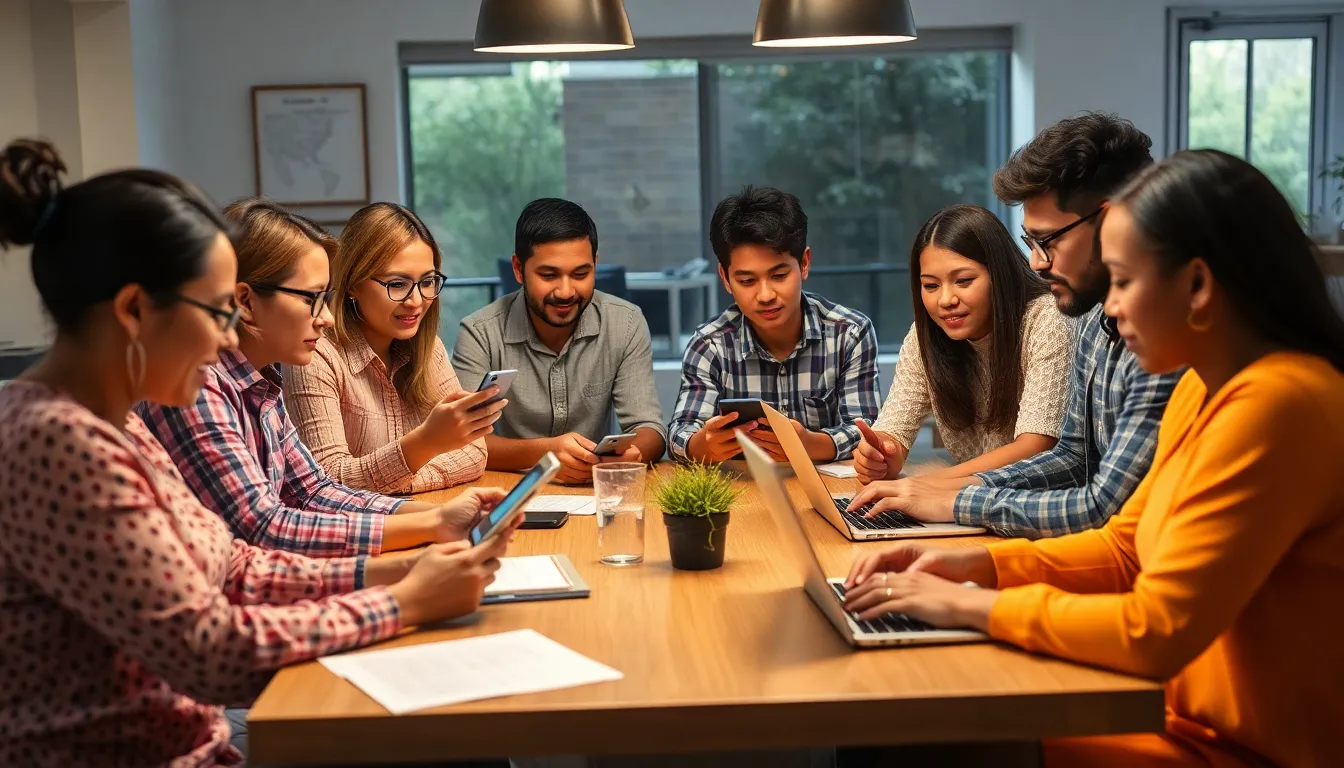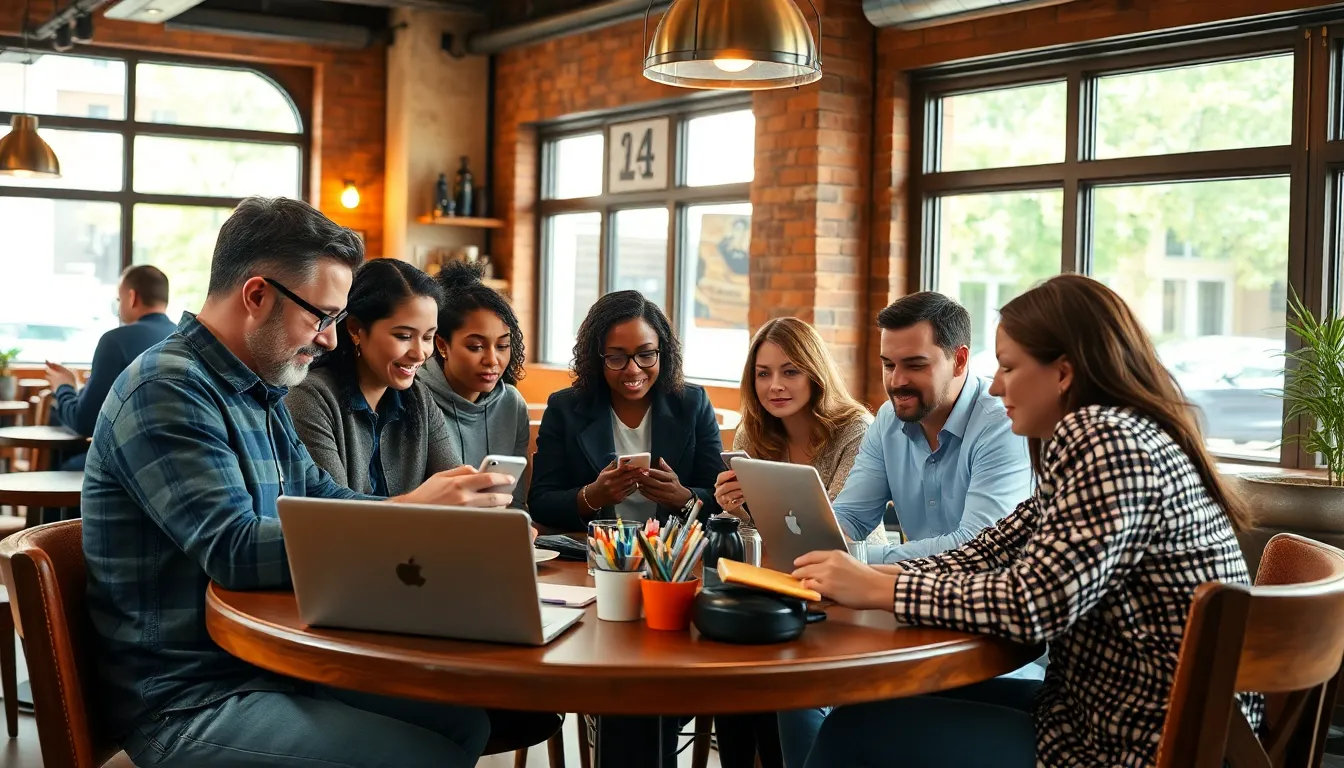Table of Contents
ToggleIn today’s fast-paced world, staying informed is more crucial than ever. News updates shape opinions, influence decisions, and keep individuals connected to the events unfolding around them. Whether it’s breaking news, political developments, or cultural shifts, timely access to reliable information empowers people to engage meaningfully with their communities and the world.
As technology evolves, so does the way news is consumed. From traditional newspapers to social media platforms, the landscape is constantly changing, making it essential for readers to navigate the noise and find credible sources. This article explores the significance of news updates, the challenges in today’s media environment, and tips for staying informed without feeling overwhelmed.
What Are News Updates?
News updates consist of the latest information regarding current events, politics, economics, technology, and social issues. News updates aim to inform the public about significant occurrences, trends, and developments that impact society. They facilitate timely dissemination of knowledge through various platforms, including television, radio, online articles, and social media.
Types of News Updates
- Breaking News
Breaking news refers to urgent reports of events as they happen, often covered live or with minimal delay. Examples include natural disasters, major accidents, or significant political developments.
- Daily News
Daily news encompasses routine reports covering a range of topics published regularly, such as local crime reports, weather forecasts, and community events.
- Special Reports
Special reports delve into specific subjects, providing in-depth analysis and background information. These updates often investigate complex issues or highlight ongoing problems.
- Feature Articles
Feature articles provide a more comprehensive look at a particular theme or topic. They often include human interest stories, interviews, or expert opinions to engage readers.
- Editorials and Opinion Pieces
Editorials and opinion pieces reflect the viewpoints of the publication or individual writers. These pieces discuss current issues and offer analysis, encouraging public discourse.
Importance of News Updates
- Informing the Public
News updates keep individuals educated about local, national, and global events, fostering informed decision-making.
- Connecting Communities
News updates link people by sharing information relevant to their lives, such as local events, community issues, and public safety alerts.
- Shaping Opinions
News updates influence public opinion by presenting information and perspectives that prompt discussions and debates on various topics.
- Promoting Accountability
Investigative news updates spotlight issues in politics, business, and society, promoting transparency and accountability among individuals and organizations.
- Enabling Engagement
News updates encourage civic engagement by informing citizens about their rights, responsibilities, and opportunities for involvement in local and national matters.
The Importance of Staying Updated

Staying informed through news updates has become essential in navigating the complexities of daily life. Access to timely information enhances understanding and supports informed decision-making.
Benefits of Real-Time News
- Informed decision-making: Access to real-time news allows individuals to make decisions based on current events, affecting personal and professional choices.
- Crisis awareness: Timely updates during emergencies help people understand threats and take necessary precautions.
- Enhanced engagement: Following breaking news fosters active participation in discussions and community events, strengthening social connections.
- Increased awareness: Exposure to diverse topics broadens perspectives, enabling individuals to appreciate multiple viewpoints.
- Accountability promotion: Instant news coverage pressures public figures and institutions to act transparently, thereby fostering accountability.
Impacts on Society
- Community cohesion: News updates connect individuals by sharing local stories, fostering a sense of belonging and support.
- Informed electorate: Awareness of political developments ensures voters can make knowledgeable choices during elections, reinforcing democratic processes.
- Social change catalyst: Timely news on social issues can mobilize community action, driving advocacy and reform.
- Public discourse facilitation: Access to current events stimulates conversations on critical topics, promoting dialogue and understanding within society.
- Consumer behavior influence: News coverage on market trends or economic changes can impact consumer decisions, shaping purchasing patterns.
Sources of News Updates
Diverse sources provide news updates in today’s interconnected world. Individuals can access information through traditional media outlets and digital platforms, each offering unique advantages.
Traditional Media Outlets
Traditional media outlets include newspapers, television, and radio. Newspapers deliver daily news articles and features, often providing in-depth analysis. Television networks, such as CNN and BBC, broadcast breaking news and live events, facilitating immediate access to current happenings. Radio, although declining in popularity, offers local news updates and discussions, keeping audiences informed during commutes.
Digital Platforms
Digital platforms encompass websites, social media, and news apps. News websites, like Reuters and The New York Times, deliver real-time updates and utilize multimedia for comprehensive coverage. Social media platforms, such as Twitter and Facebook, allow users to quickly share news stories and engage in discussions. News apps provide personalized notifications, allowing users to stay abreast of specific topics of interest, enhancing the news consumption experience.
The Evolution of News Updates
The transition of news updates reflects significant changes in how information is disseminated and consumed. Understanding this evolution is crucial to navigating today’s media landscape.
From Print to Digital
The shift from print to digital marked a fundamental change in news updates. Traditional newspapers provided weekly or daily editions, but digital platforms now offer immediate access to news. In 2022, approximately 82% of U.S. adults reported getting news online at least occasionally. Digital formats include websites, podcasts, and apps that present news in real-time. This transition results in more interactive content, where users can engage with news articles through comments and social sharing. Readers now access a wider range of sources, enabling diversification of viewpoints and information.
The Role of Social Media
Social media platforms have reshaped news updates, acting as critical channels for information sharing. Platforms like Twitter, Facebook, and Instagram enable rapid dissemination of breaking news, often before traditional outlets. For instance, in 2022, 53% of U.S. adults obtained news from social media, showcasing its prominence. These platforms provide a space for citizen journalism, allowing users to report events directly. Engagement metrics, such as shares and likes, create a feedback loop, helping journalists gauge public interest and shift editorial focus. However, social media also poses challenges, including misinformation and echo chambers, complicating the quest for credible news.
Challenges in News Updates
Navigating the modern media landscape presents various challenges. Key issues include misinformation and information overload, which impact how individuals receive and interpret news updates.
Misinformation and Fake News
Misinformation and fake news significantly undermine trust in media sources. A 2023 study by the Pew Research Center found that 64% of U.S. adults encounter false or misleading information related to current events. Some platforms lack rigorous fact-checking, allowing opinions to spread unchecked. Consequently, individuals often face difficulty differentiating between credible news and misleading content. Reliance on social media amplifies this issue, as algorithms often prioritize sensationalism over accuracy, fostering echo chambers where misinformation thrives.
Overload of Information
Overload of information contributes to confusion and frustration among news consumers. With countless sources available, individuals may struggle to filter relevant updates. Research shows that, on average, adults encounter over 5,000 media messages per day. This saturation can lead to cognitive fatigue, reducing readers’ ability to process information effectively. As a result, important stories may get overlooked while trivial content garners attention. Strategies to manage information overload include prioritizing credible sources, utilizing news aggregators, and setting specific times for news consumption to foster a more focused approach.
Staying updated with news is essential for navigating the complexities of today’s world. With the rapid evolution of media and the abundance of information available, it’s crucial to prioritize credible sources. By doing so, individuals can enhance their understanding and make informed decisions that impact their lives and communities.
The challenges of misinformation and information overload highlight the importance of a focused approach to news consumption. By adopting strategies like using news aggregators and setting specific times for updates, readers can cultivate a more enriching news experience. Embracing these practices not only fosters personal growth but also strengthens the fabric of society by promoting informed engagement and accountability.




